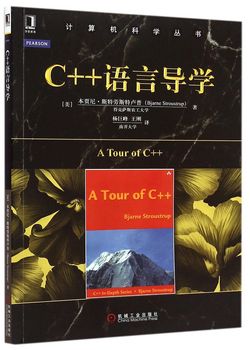汉语经历体过的时间量化研究 / 中国语言学书院海外语言学博士论文文库
¥29.00定价
作者: 叶萌 主编:胡建华
出版时间:2014-07
出版社:商务印书馆
- 商务印书馆
- 9787100101264
- 63620
- 2014-07
- H14
内容简介
叶萌著的《汉语经历体过的时间量化研究》是研究表经历的句子的语义,分析汉语经历体标记“过”。一般对“过”的分析着重于其时貌与表时间的功能,而本书从“量化”的角度来探讨。过去的研究偏重于陈述汉语表经历的句子的特点,但是没有进一步解释为什么表经历的句子有这些特点。本书提出经历体标记“过”应分析为数量副词或者量化副词,其功能与英文的always,often和sometimes类似。这些副词所表达的不是单一特定的事件,而是一种事件,这种事件发生数次。
目录
Introduction
0.1 Introduction
0.2 The Structure of the Dissertation
Chapter One On Experiential Constructions:an Overview
1.0 Introduction
1.1 A Typology of EXPER
1.2 Review of the Semantics of ExPER
1.3 EXPER and the English Perfect
1.4 Other Uses of the Morpheme Guo in Mandarin
Chapter Two EXPER:a Temporal Quantifier
2.0 Introduction
2.1 A Parallel between Temporal and Nominal Anaphora
2.2 Discourse Representation Theory
2.3 Temporal Relations between Sentences in Discourse
2.4 A DRT-Based Analysis of Temporally Quantified Sentences
2.5 Temporally Quantified Sentences in Discourse
2.6 ExPER:a Temporal Quantifier
2.7 Subordination in Discourse
2.8 Conclusion
Chapter Three The EXPER,Viewpoint Aspect,and Situation Types
3.0 Introduction
3.1 The Two-Component Theory
3.2 EXPER and Situation Types.
3.3 The Viewpoint Aspect of EXPER
3.4 Discontinuity
3.5 Summary and Conclusion.
Chapter Four The English Perfect and Experiential Constructions
4.0 Introduction
4.1 The English Perfect
4.2 Experiential Guoexp:Temporal Characteristics and Aspectual Value
4.3 Guoexp and the English Perfect
Chapter Five Conclusion and Further Research
Appendix
References
VITA
0.1 Introduction
0.2 The Structure of the Dissertation
Chapter One On Experiential Constructions:an Overview
1.0 Introduction
1.1 A Typology of EXPER
1.2 Review of the Semantics of ExPER
1.3 EXPER and the English Perfect
1.4 Other Uses of the Morpheme Guo in Mandarin
Chapter Two EXPER:a Temporal Quantifier
2.0 Introduction
2.1 A Parallel between Temporal and Nominal Anaphora
2.2 Discourse Representation Theory
2.3 Temporal Relations between Sentences in Discourse
2.4 A DRT-Based Analysis of Temporally Quantified Sentences
2.5 Temporally Quantified Sentences in Discourse
2.6 ExPER:a Temporal Quantifier
2.7 Subordination in Discourse
2.8 Conclusion
Chapter Three The EXPER,Viewpoint Aspect,and Situation Types
3.0 Introduction
3.1 The Two-Component Theory
3.2 EXPER and Situation Types.
3.3 The Viewpoint Aspect of EXPER
3.4 Discontinuity
3.5 Summary and Conclusion.
Chapter Four The English Perfect and Experiential Constructions
4.0 Introduction
4.1 The English Perfect
4.2 Experiential Guoexp:Temporal Characteristics and Aspectual Value
4.3 Guoexp and the English Perfect
Chapter Five Conclusion and Further Research
Appendix
References
VITA





